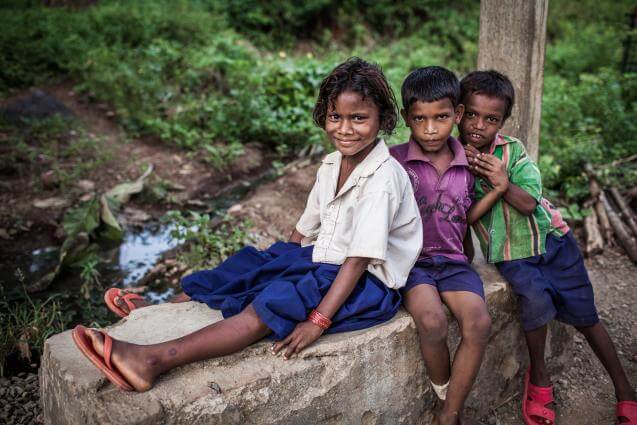+91 80 25586293
Bodrum Escort – Bodrumalem.com
 Author: Alex George
Author: Alex George
Posted on: Monday, 10th August 2015

Bronzlaşmak yaz tatilinin en keyifli aktivitelerinden biridir. Ancak uygun önlemler almadan doğru şekilde bronzlaşmak güneşin zararlı etkilerinden dolayı sağlık sorunlarına yol açabilir. Özellikle Bodrum Escort gibi yoğun güneşli yerlerde kızarmadan nasıl bronzlaşabileceğiniz konusunda bazı ipuçları sunuyoruz.
bodrum escort İlk olarak, güneş koruyucu kullanımı bronzlaşırken en önemli adımlardan biridir. Gerektiği kadar güneş koruyucu kullanarak zararlı UV ışınlarından korunabilir ve sağlıklı bir şekilde bronzlaşabilirsiniz. Ayrıca, güneşin en yoğun olduğu saatler öğle saatleri olup, bu saatlerde direk güneş ışınlarına maruz kalmamaya özen gösterin; daha rahat bir şekilde bronzlaşmak için sabah saatlerini ya da gün batımını tercih edebilirsiniz.
Bronzlaşmak sadece dışarıdan yapılacak bir işlem değil, aynı zamanda beslenmenize de bağlıdır. A, C ve E vitaminleri içeren yiyeceklerle sağlıklı bir beden oluşturarak bronzlaşmayı kolaylaştırabilirsiniz. Bronzlaştırıcı kremler, cildi bronzlaştırmak için kullanılır ve özellikle beyaz tenli kişiler için uygundur. Fakat ürünün doğal içerikli ve dermatolojik olarak test edilmiş olmasına özen göstermelisiniz.
Cildinizin bronzlaşmasını sabitlemek için uyumadan önce duş almak ve nemlendirici sürmek önemlidir. Ayrıca, cildinizi vitamin ve minerallerle desteklemek için cilt bakım ürünleri kullanabilirsiniz. Son olarak, su tüketimi cildin nem ve esnekliğini korumak için çok önemlidir. Bronzlaşmanızı da su içerek destekleyebilirsiniz. Unutmayın ki, bronzlaşma sadece cildinizi koyulaştırmakla kalmaz, aynı zamanda cildinizi nemlendirerek daha sağlıklı hale getirir.
Bronzlaştırıcı kremleri kullanmadan önce cildinizin hassasiyetine dikkat etmelisiniz. Alerjik reaksiyonlara yatkın olanlar, öncelikle bir dermatologa danışmalı ve test yaparak hangi ürünün ciltleri için uygun olduğunu öğrenmelidirler. Ayrıca, bronzlaştırıcı kremleri düzenli olarak kullanırken uygulama tekniklerine özen göstermek gerekir. Eşit bir renk dağılımı için, kremler uygun şekilde uygulanmalı ve ciltte homojen bir şekilde dağıtılmalıdır.
Güneş Koruyucu Kullanımı
Güneş koruyucu, bronzlaşırken en önemli adımlardan biridir. Yüksek SPF’li bir güneş koruyucu kullanarak, cildinizi zararlı UV ışınlarından koruyabilirsiniz. Böylece, güneşin zararlı etkilerinden korunarak sağlıklı bir şekilde bronzlaşabilirsiniz. Ayrıca, güneş koruyucu kullanmadan önce cildinizi güneşe hazırlamalısınız. Cildinizi temizleyin ve nemlendirin. Güneş koruyucuyu sürmeden önce, cildinize uygun olan bir nemlendirici kullanarak cildinize nem kazandırabilirsiniz. Bu sayede, güneşin zararlı etkilerine karşı daha dirençli bir cilt elde edersiniz. Unutmayın ki, her zaman gerektiği kadar güneş koruyucu kullanarak, güneşin zararlı etkilerinden korunabilir ve sağlıklı bir şekilde bronzlaşabilirsiniz.Öğle Saatlerinden Kaçının
Güneşin en yoğun olduğu saatler olan öğle saatlerinde güneşe maruz kalmak, cildinizi yanık ve kırmızı hale getirebilir. Bu nedenle bronzlaşmak için en uygun saat sabah saatleri ya da gün batımıdır. Böylece cildiniz sağlıklı bir şekilde koyulaşarak bronzlaşırken, zararlı UV ışınlarından korunmuş olursunuz. Ayrıca, özellikle denize girerken güneş koruyucu kullanımına da dikkat edilmelidir. Su yüzeyi güneş ışınlarını yansıttığı için denizde bronzlaşmak özellikle risklidir. Bu nedenle güneş koruyucu kullanımı cildinizi zararlı etkilerden koruyacak ve sağlıklı bir bronzlaşma sağlayacaktır.- Güneşin en yoğun olduğu saatlerde güneşe maruz kalmaktan kaçının.
- Sabah saatleri ya da gün batımı gibi güneşin daha az yoğun olduğu saatleri tercih edin.
- Mümkünse güneş koruyucu kullanın ve su altında güneş koruyucunuzu yenileyin.
Güneş Gözlüğü Kullanımı
Güneş gözlüğü kullanımı, sadece modaya uygun olmak için değil, aynı zamanda gözlerinizi zararlı UV ışınlarından korumak için de önemlidir. Güneş gözlüğü seçimi yaparken dikkat etmeniz gereken birkaç şey vardır. UV ışınlarından koruyacağını ve gözünüzü yormayacağını garanti eden gözlükler tercih edin. Ek olarak, polarize lensler güneşin parlamasını azaltır ve net bir görüş sağlar. Gözlüklerin emniyet bandı da, dalgalı sularda veya hareket ettikçe düşmemelerini sağlar.Sağlıklı Beslenin
Bronzlaşma sadece cilt rengini koyulaştırmakla sınırlı değildir, aynı zamanda cildin sağlıklı olmasını da sağlar. Bu nedenle, sağlıklı beslenmek bronzlaşmanın en önemli adımlarından biridir. Güneş ışınlarına maruz kalmadan önce ve sonra yüksek antioksidan içeriğine sahip meyve ve sebzeler tüketerek cildinizi en iyi şekilde hazırlayabilirsiniz. A vitamini içeren havuç, tatlı patates, ıspanak ve kıvırcık lahana, derinizin koruyucu işlevini artırarak yanıkların önlenmesine yardımcı olur. C vitamini açısından zengin olan portakal, çilek ve kivi gibi meyveler ise kolajen üretimini artırarak cildinizin daha sıkı ve sağlıklı olmasını sağlar. E vitamininin cilt sağlığı açısından faydaları ise oldukça önemlidir. E vitamini bakımından zengin badem, fındık, tuzsuz fıstık gibi kuruyemişler, cildinizin daha fazla nem tutmasına yardımcı olarak bronzlaşmayı destekler. Ayrıca, somon, sardalya ve ton balığı gibi omega-3 açısından zengin besinler de cildin sağlıklı olmasına yardımcı olur. Bunların yanı sıra, bronzlaşma sürecinde bol miktarda su tüketimi de oldukça önemlidir. Çünkü su, vücudun nem dengesini korumasına yardımcı olur ve cildin güneşin zararlı etkilerine karşı daha dirençli olmasını sağlar.Bronzlaştırıcı Krem Kullanımı
Bronzlaşmak için birçok kişi bronzlaştırıcı kremler kullanır. Bronzlaştırıcı kremler, cildi bronzlaştırmak için kullanılır ve özellikle beyaz tenli kişiler için uygundur. Bu kremler, cildin koyulaşmasına ve daha bronz bir görüntüye kavuşmasına yardımcı olur. Fakat önemli bir nokta var, ürünün doğal içerikli ve dermatolojik olarak test edilmiş olmasına özen göstermelisiniz.| Avantajları | Dezavantajları |
|---|---|
| + Cildi nemlendirir ve besler | – Bazı kişilerde alerjik reaksiyonlara neden olabilir |
| + Ciltte homojen ve doğal bir bronzlaşma sağlar | – Cildin rengini eşit dağıtmak için uygulama tekniği önemlidir |
| + Zararlı UV ışınlarından cildi korur | – Uzun süreli kullanımda cildin yapısını bozabilir |



